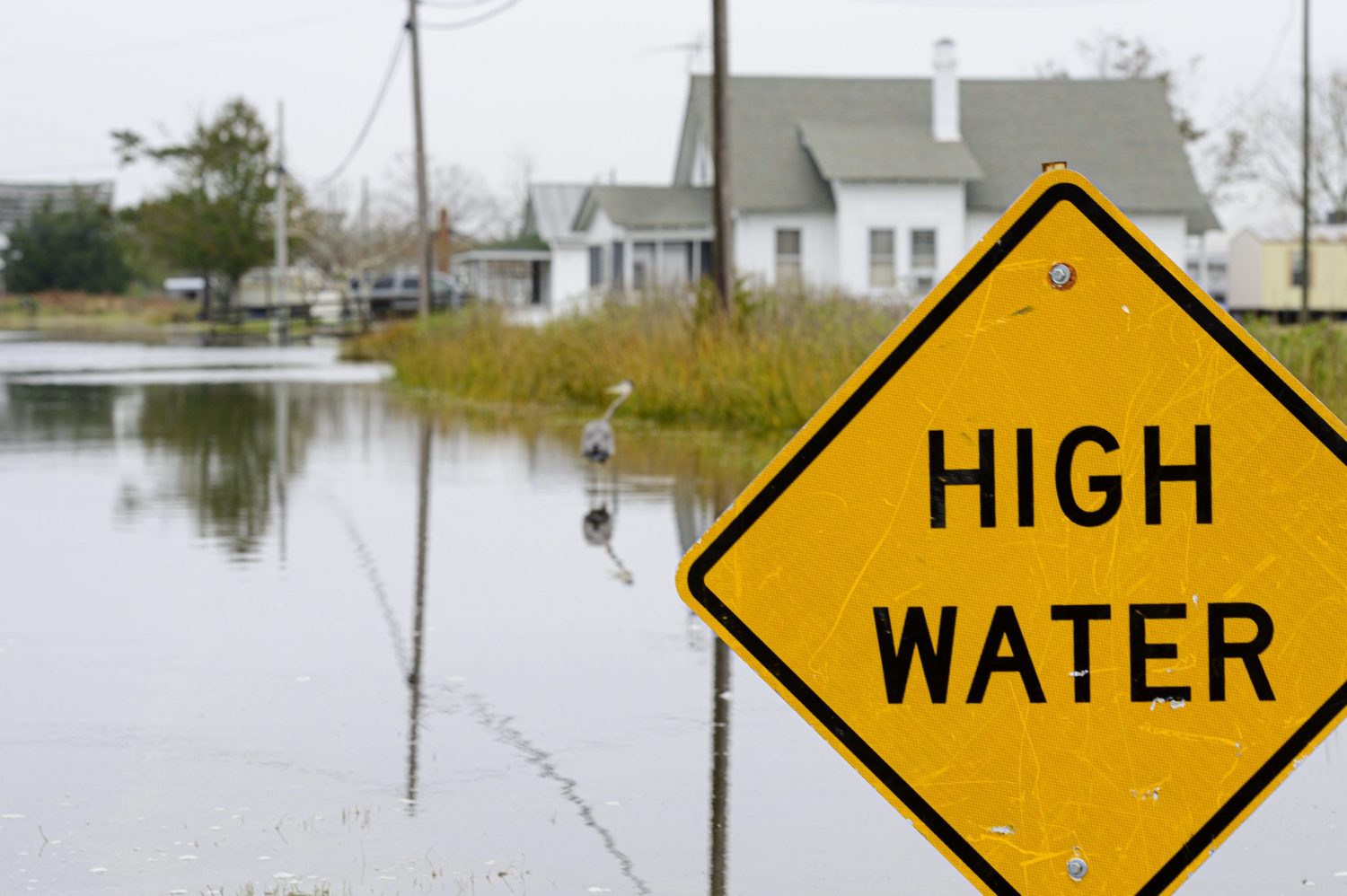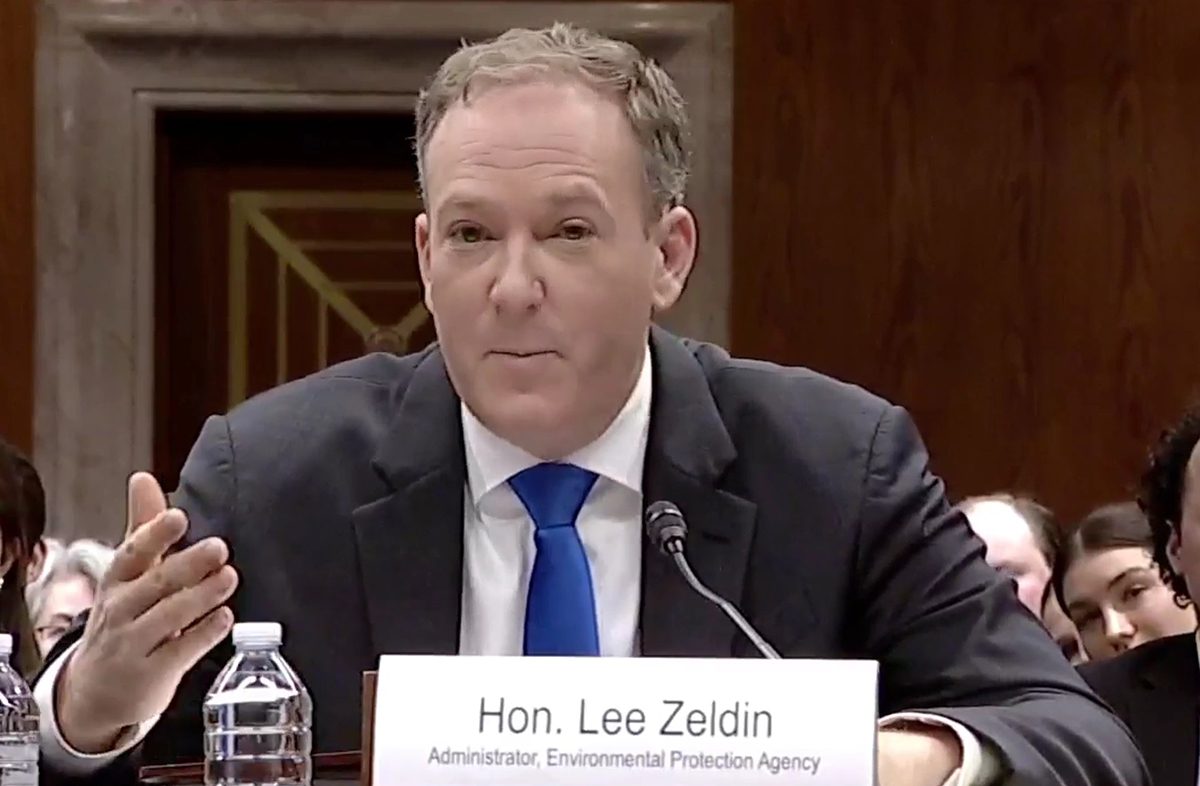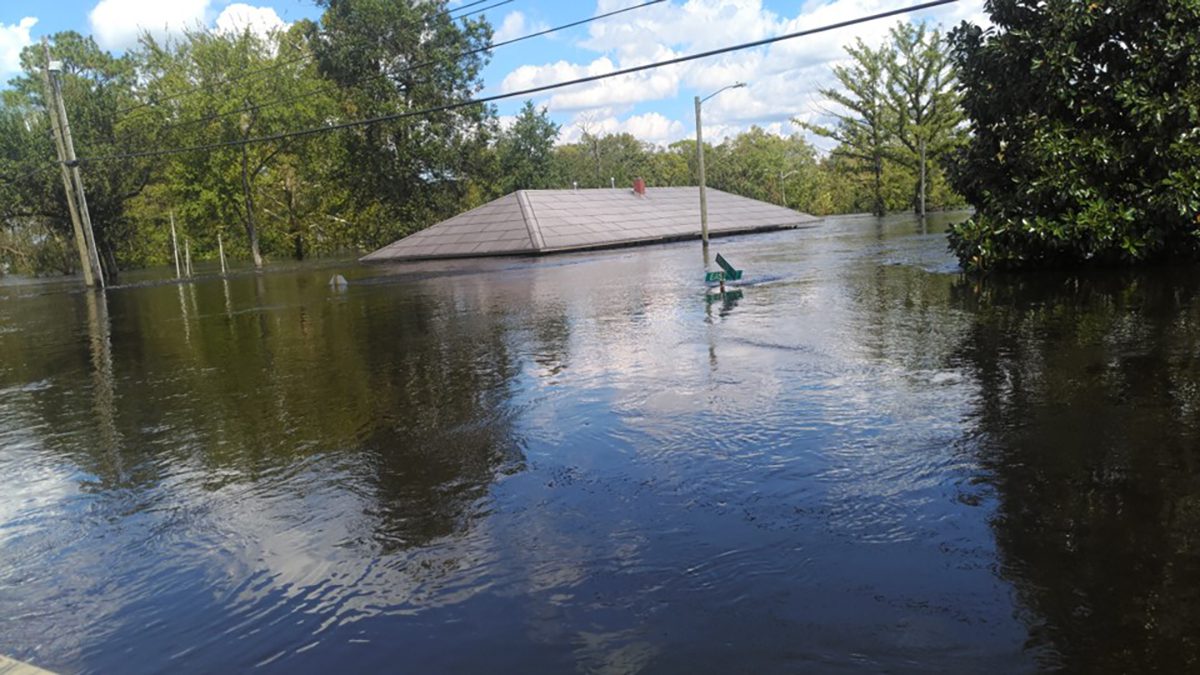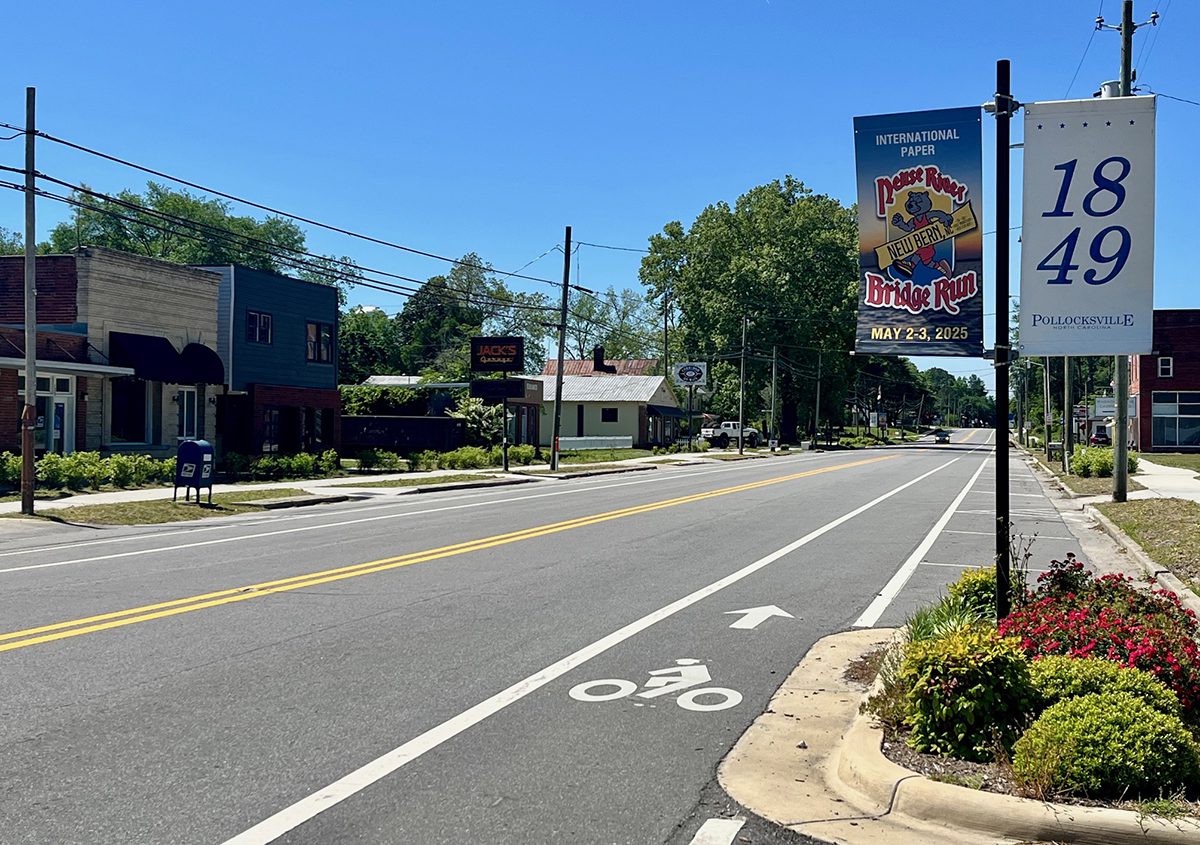
This is the eighth installment in a continuing series on climate change and the North Carolina coast that is part of the Pulitzer Center’s nationwide Connected Coastlines reporting initiative.
Now that the state’s 2020 resiliency plan has been submitted, the North Carolina Office of Recovery and Resiliency will begin working with other state offices to address vulnerabilities caused by climate change.
Supporter Spotlight
“Going forward, our team looks forward to supporting other agencies with guidance and with working across the state on some of these big cross-cutting resilience challenges as part of the North Carolina Resilience Strategy,” Chief Resilience Officer Jessica Whitehead told Coastal Review Online.
The North Carolina Climate Risk Assessment and Resilience Plan was submitted Tuesday to Gov. Roy Cooper by the state Department of Environmental Quality. The plan looks at climate stressors that include flooding, drought and extreme heat events as well as nonclimate stressors such as population growth, aging infrastructure, public health threats and increased development as well as strategies to move forward.
NCORR worked with NCDEQ to create the resiliency plan, one of the directives in Executive Order 80, North Carolina’s Commitment to Address Climate Change and Transition to a Clean Energy Economy, that Cooper signed Oct. 29, 2018.
“We have a responsibility to mitigate the damage caused by these storms and the shifting weather pattern and to make all of our communities more resilient. We have to rebuild stronger and smarter and ensure that we can withstand the impacts of climate change that we will be seeing in the foreseeable future,” which is why Cooper asked that a statewide risk and resiliency plan be developed as part of Executive Order 80, NCDEQ Secretary Michael S. Regan told the Wilmington Rotary Club during an address earlier this year.
NCORR resilience team had leadership roles writing the “Climate & Environmental Justice” and “The Path Forward for a Climate Resilient North Carolina” chapters for the 2020 Resiliency Plan. The agency will continue working to address climate change by being part of the North Carolina Resilience Strategy, which includes four elements: North Carolina Climate Science Report, State Agency Resilience Strategies, Statewide Vulnerability Assessment and Resilience Strategies, and the North Carolina Enhanced Hazard Mitigation Plan.
Supporter Spotlight
A division of the North Carolina Department of Public Safety, NCORR was established after Hurricane Florence in October 2018 to streamline recovery programming and assistance and administer programs for homeowner recovery, affordable housing, mitigation, buyout and local government grants and loans.
So far, the state has spent more than $3.5 billion in state and federal funding in recovery for hurricanes Matthew and Florence.
In anticipation of the release of the resiliency plan, NCORR put out at the end of April a 16-page online document, Natural Hazards Resilience: A Quick Start Guide for North Carolina Communities to help local governments be better prepared to take their own action when the resiliency plan gets published, Whitehead said.
“As we looked at the literature, there’s a lot out there on how to do a risk assessment, but not a whole lot about how to set yourself up for success in building resilience,” she said, adding some rural communities really need help with the coordination and time for data gathering that you need to even start assessing risks, much less deciding what to do.
The team at NCORR synthesized ideas in the Colorado Resiliency Playbook for state agencies with Whitehead’s experience with working with leaders at the local level to create North Carolina’s Natural Hazards Resilience Quick Start Guide, she said.
“Any local government or community group can take these principles and start building teams to be ready to divide up the work and support each other in integrating resilience thinking every day,” she said. “Now that the state published the 2020 Resilience Plan, we can build out the support the state is offering and have more communities ready to take it and run with getting to local action. It’s very much intended as a first step.”
Whitehead explained that the Quick Start Guide was put under extensive review by the resilience practitioner community, local governments, the state Department of Public Safety, other state agencies, the governor’s office and volunteers.
“The feedback we got was constructive, but universally positive – our reviewers thought it was very well done. The guide doesn’t read like a typical government document, and that’s a good thing,’ she said. “I’m so proud of my team because it was a big challenge to produce something easy to read that would also provide expert level guidance on a very bottom-up, local process.”
Though she wasn’t with the state at the time, Whitehead said she understood that plans were in motion for Executive Order 80 before Hurricane Florence hit in 2018.
“Now that the state published the 2020 Resilience Plan, we can build out the support the state is offering and have more communities ready to take it and run with getting to local action. It’s very much intended as a first step.”
Jessica Whitehead, Chief Resilience Officer, North Carolina Office of Recovery and Resiliency
“I would say Florence was less of a catalyst and more of a reinforcement that this work needed to proceed in earnest,” she said. “Another critical way Florence changed the conversation was in helping people to better understand the potential magnitude of what we are dealing with statewide.”
For example, she said, North Carolina Sea Grant, The Nature Conservancy, North Carolina Coastal Federation and the state Division of Coastal Management facilitated Swansboro’s Vulnerability, Consequences and Adaptation Planning Scenarios, or VCAPS, meeting about three weeks before Florence happened. VCAPS is a planning tool to help decision makers look at the effects of climate change and develop strategies.
“When we walked through those exercises with town decision-makers and asked them to think about absolute worst-case scenario rainfall events, it stretched their imaginations to think of 10-15 inches of rain in a single storm. Three weeks and 34 inches of rain later, it wasn’t such a stretch to think about what the impacts could be. It really changed the conversation across the board,” she said.
Before Florence, she said the VCAPS partners would have had to spend time convincing some audiences that this was a discussion worth having.
“Now we almost have the opposite problem – people accept it but want to skip the part where we plan and jump straight to what to do. There’s a danger in that – when we act quickly without planning to make sure that we are doing the most amount of good we can for the broadest variety of people, we run the risk that our action may leave some of our most vulnerable people behind,” she said. “We also run the risk of investing time in actions that make us feel safe without knowing that we are really making the best choices to actually reduce risk.”
Whitehead, who took her role at NCORR after serving as North Carolina Sea Grant’s coastal hazards adaptation specialist from 2013 to 2019, explained that the team’s definition of a resilient North Carolina “is a state where our communities, economies and ecosystems are better able to rebound, positively adapt to, and thrive amid changing conditions and challenges, including disasters and climate change; to maintain and improve quality of life, healthy growth, and durable systems; and to conserve resources for present and future generations.”
She said that there’s a lot of ideas about resilience such as building sea walls and fortifying structures that “overlap with hazard mitigation and imply that we will engineer our way out of disasters. That is not the one-size-fits-all vision we have for North Carolina.”
While those solutions may work and may be the only viable option in some situations, “so are options like figuring out how to live with water, using green infrastructure and in some places where flooding has been too repetitive, offering programs to buy out homeowners at risk and reconstruct affordable housing in lower risk areas so people have somewhere to go,” Whitehead said. “We will continue to build out how we implement that vision, but it will be across all hazards — not just flooding — and include building resilience from the mountains to the coast. be seeing in the foreseeable future.”
Funding challenges
Another challenge with resiliency and climate change is how to fund action, Whitehead explained.
“When we have so many challenging issues in affordable housing, education and health care, it’s just as easy today as it was in 2010 to budget for the next year and put off those long-term issues like disaster planning or climate change for later,” she said. “I think we have a better understanding though that everyone faces that funding challenge – worldwide, not just in North Carolina. Today, we are better equipped than we were a decade ago to network and stay in touch around the nation and the world to learn lessons about innovative or best practices to meet some of those funding challenges.”
Regan explained to the group in Wilmington how the lack of funding affects both the environment and economy.
Since 2010, the portion of DEQ staff responsible for protecting the state’s water quality has been cut by 40% by the North Carolina General Assembly, he said. “And so one could say that in 2010, 11 and 12, the rationale for cutting the enforcement arm — the scientists, the engineers — was because the economy was slow, and there was some that did not want the DEQ to get to reform and quote-unquote overregulate.”
From 2012 on, Regan continued, the state economy has been doing well and with the reduction of staff, his office has not only been unable to protect water quality for the 10 million residents the way they’d like to but the state has had an influx of businesses who are waiting up to two years just to get a permit from the state to operate.
“So, I would argue that prior to my arrival, we were on that downward slope of getting the resources that we need,” Regan said. Since being appointed secretary, he said he’s attempted in a very bipartisan fashion to approach the General Assembly and make the argument that protecting water quality is just as good for the environment, and public health, as it is for the economy.
“As you all know, our robust coastal economy depends on the protection of our beaches and our sounds and the marine life. And we stood with mayors and county leaders along the coast, who oppose offshore drilling and seismic testing,” Regan continued. “Our coastal communities, already have enough to deal with. The science tells us that if we do nothing, climate change means more intense storms. But we’re not just worried about the hurricanes. Climate experts working on North Carolina’s climate science report say rainfall events will be heavier and sea level rise will impact our beach communities.”
“Our coastal communities, already have enough to deal with. The science tells us that if we do nothing, climate change means more intense storms. But we’re not just worried about the hurricanes. Climate experts working on North Carolina’s climate science report say rainfall events will be heavier and sea level rise will impact our beach communities.”
Michael Regan, Secretary, North Carolina Department of Environmental Quality
Whitehead explained that what we know about how climate adaptation happens in 2020, or how risk is communicated, is very different.
“We understand better that defining overall trends is just a first step – to get that information to a decision, like how big a pipe should be to convey enough stormwater in 2050, is a lot more complex. You have to translate those projected precipitation scenarios into the intensities, durations and frequencies of rainfall events to be able to successfully design a stormwater pipe,” she said, adding you also need to consider other factors that go into that decision, like how expensive it is to create larger scale stormwater projects today and what is affordable.
“And then you need to prioritize – if you only have so much funding, do you put your efforts into improving stormwater infrastructure in a downstream location, or do you get more bang for your buck investing in a project upstream first? Science doesn’t have a good answer for this anywhere yet – but in North Carolina we are again asking these questions and outlining plans for how to get to answers we can implement, which puts us right back on the cutting edge of climate response,” she said.
Whitehead said that there’s “still no one-size-fits-all solution to climate change, but we know a lot better about how to engage and tailor scientific information. That said, there’s still a lot we have to learn about how to know which solutions are best in each place – or even what a viable solution is in some cases, like long-term land loss due to sea level rise, or how to make sure the rapidly urbanizing Piedmont has enough drinking water in 2050.”
She added that it’s been hard to tell how COVID-19 will impact the way people respond to climate change issues.
“COVID-19 has exposed so many of the ways our social and economic systems are vulnerable to shocks and stressors. A pandemic is definitely a shock, while climate change is a long-term stressor punctuated by shocks. I think we are still in response mode on COVID-19, and it remains to be seen in the long term how we change the ways we understand how widespread or deeply challenging something like a pandemic or climate change can be,” she said.
“I think it will shift how we process risk as a society. Importantly, as we begin to think of pandemic recovery, many of the things we do to improve social and economic resilience – the ways we care for our most vulnerable people, the ways we diversify our economies and think differently about resilience in supply chains or infrastructure so that it’s more able to handle major disruptions – are the things that will also reduce the harms and increase our abilities to adapt to climate change.”








